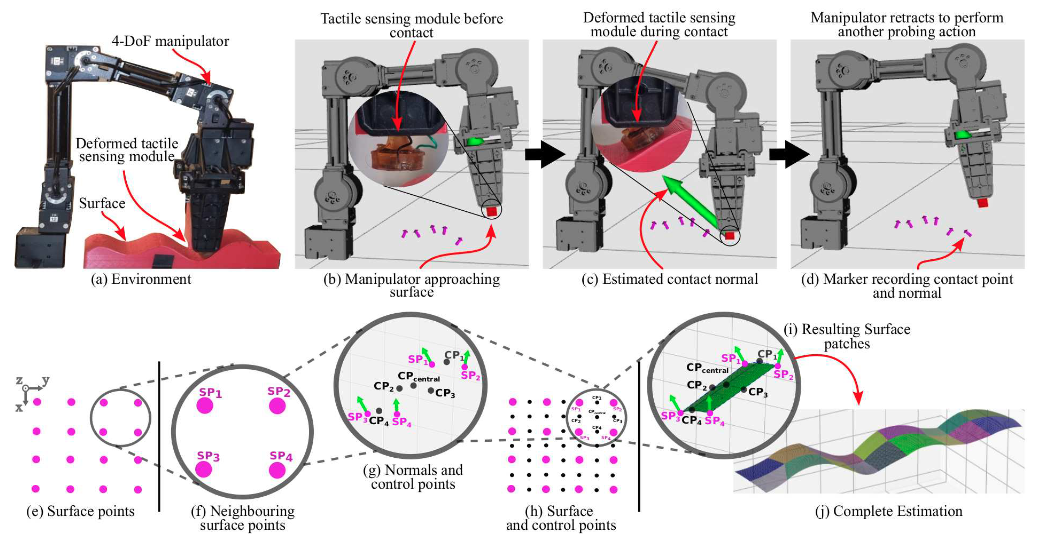Tactile Surface Reconstruction and Texture Recognition
Advanced Multi-Modal Sensing

Our research in tactile texture recognition focuses on creating intelligent systems that enable robots to identify and classify surfaces through touch, a crucial capability for complex manipulation in unstructured environments. A significant contribution has been the development of advanced algorithms and the use of multimodal sensing to handle the challenges of real-world scenarios, particularly on uneven or non-planar surfaces.
We have explored the use of data from our compliant sensors, like the BioIn-Tacto, to create comprehensive datasets for dynamic texture classification (Lima et al., 2023). This data captures rich information including pressure, acceleration, and angular rate, allowing for a detailed analysis of the interaction between the sensor and the texture.
Recent work has focused on leveraging these multimodal data streams with sophisticated deep learning architectures. This includes using Self-Attention Based Neural Networks and Multi-Scale Voting Systems to improve the accuracy and robustness of tactile texture recognition, even when the surface is uneven (missing reference). This ensures that robots can reliably sense and classify textures, regardless of the complexity or irregularity of the surface geometry (missing reference). This area of research is fundamental to advancing robotic awareness and interaction capabilities.
References
2024
-
Leveraging Compliant Tactile Perception for Haptic Blind Surface ReconstructionIn 2024 IEEE International Conference on Robotics and Automation (ICRA), 2024
2023
-
A multimodal tactile dataset for dynamic texture classificationData in Brief, 2023